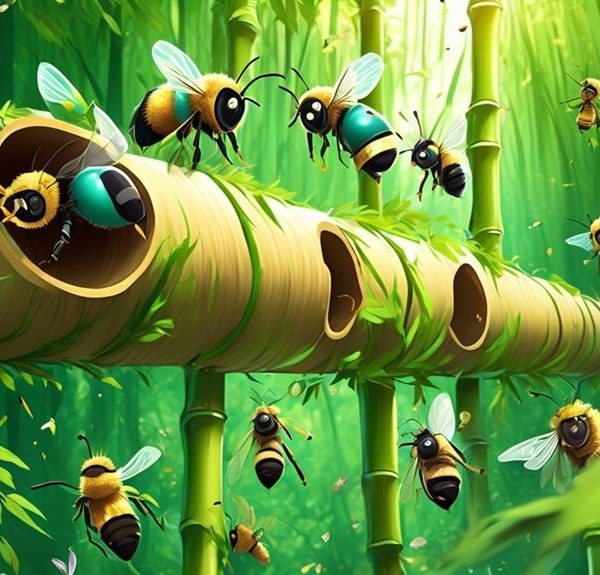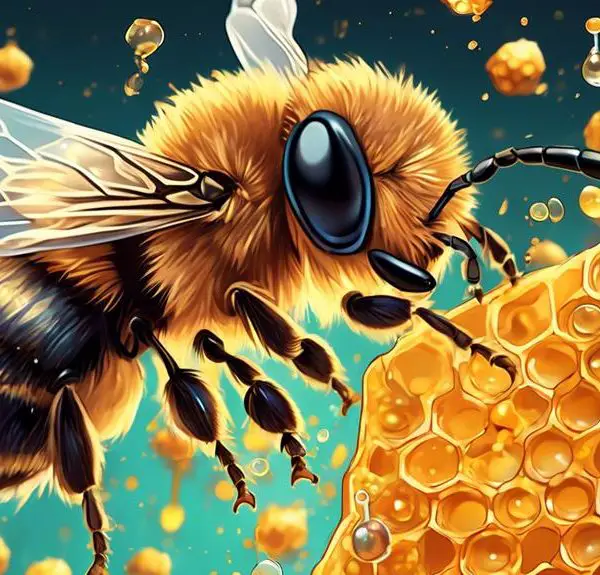Learn if mason bees can thrive in plastic containers, a question stirring debate among bee enthusiasts – the answer might surprise you!

Can Mason Bees Live in Plastic Containers?
As you sit on your porch, sipping lemonade like an old-fashioned beekeeper, you can't help but wonder: could mason bees thrive in plastic containers? It's an intriguing question, isn't it? And it's one that's sparked considerable debate among both amateur and professional bee enthusiasts.
On the one hand, plastic containers are inexpensive, durable, and easy to clean. On the other hand, they're not exactly a natural habitat for these industrious little creatures.
So, what's the verdict? Stick around – the answer may surprise you!
Key Takeaways
- Mason bees are solitary creatures that create their own nests, typically in small crevices or hollow stems.
- Plastic containers mimic the small, enclosed spaces that Mason bees seek out, but they do not breathe like natural materials and can lead to moisture accumulation and mold growth.
- Plastic containers are readily available, inexpensive, and durable, but they may not provide the necessary thermal insulation for Mason bees.
- Wood or mud structures, such as bamboo tubes or drilled blocks of wood, offer superior moisture absorption and insulation and are a better alternative for housing Mason bees.
Understanding Mason Bees' Habitat Needs

To fully appreciate the suitability of plastic containers for Mason bees, you need to understand their unique habitat needs. Unlike honeybees, Mason bees don't live in hives. They're solitary creatures, each female creating her own nest. These nests are typically found in small crevices or hollow stems, where the female Mason bee can lay her eggs and seal them off with a mixture of nectar and pollen for the larvae to eat when they hatch.
Now, you're probably wondering how this relates to plastic containers. It's simple. A plastic container mimics the small, enclosed spaces that Mason bees naturally seek out. But there's more to it than that. The container needs to be the right size, with holes that are about 5/16 of an inch in diameter. It must be clean, to prevent the spread of disease, and it needs to be placed in a sunny, south-facing location.
Pros of Plastic Containers for Bees
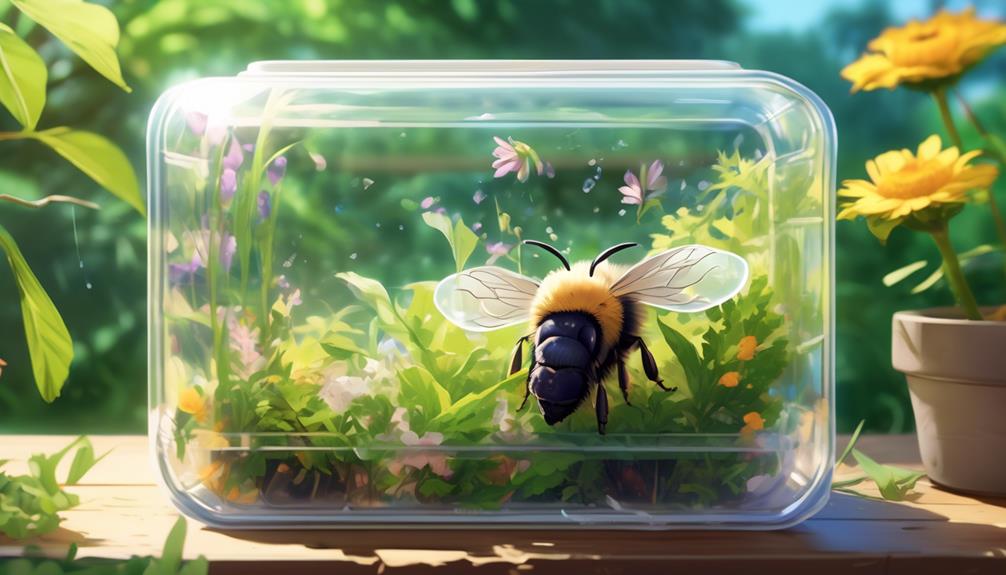
In considering the use of plastic containers for Mason bees, you'll find several advantages worth noting.
Firstly, plastic is a readily available and inexpensive material. This makes it a cost-effective solution for creating artificial habitats for these bees.
Secondly, plastic containers are durable and can withstand harsh weather conditions, providing a stable and secure environment for the bees. Unlike natural materials, they won't decay or deteriorate, ensuring a longer lifespan for the bee's habitat.
Thirdly, due to their non-porous nature, plastic containers can prevent the growth of mold and bacteria, which are hazardous to the bees' health. This feature also makes cleaning and maintenance easier, as you can simply wash the containers with water and a mild detergent.
Lastly, plastic containers allow for flexibility in terms of size and design. You can easily drill holes of the appropriate diameter for Mason bees, and arrange multiple containers to create a larger habitat.
However, it's crucial to note that not all plastics are safe for bees. You should use food-grade plastic, free from harmful chemicals that could potentially harm the bees. Always ensure the plastic is clean and dry before introducing it to the bees.
Cons of Housing Mason Bees in Plastic
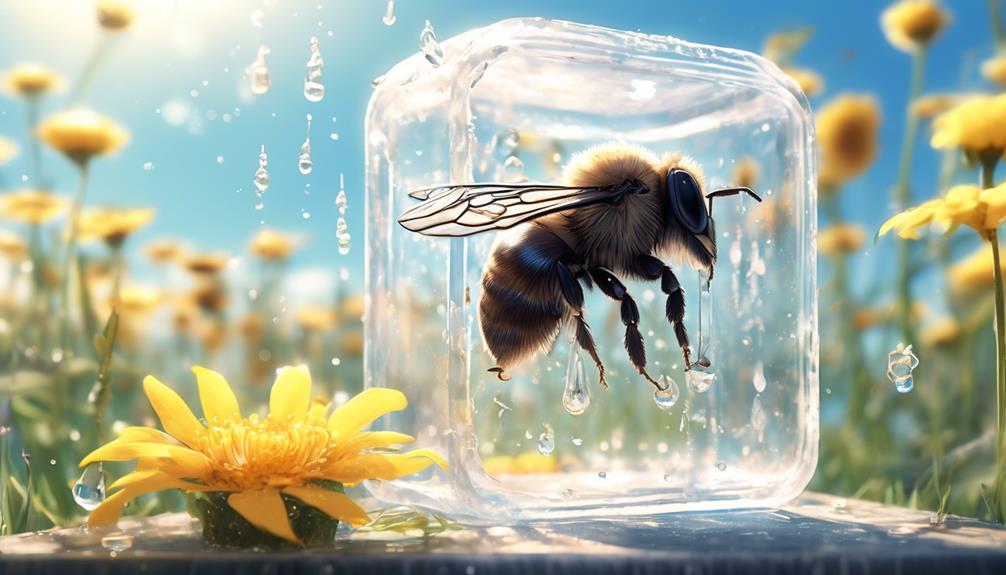
While plastic containers have several advantages for housing Mason bees, they also present certain drawbacks that you need to consider.
Firstly, plastic containers don't breathe like natural materials such as wood or clay. This lack of breathability can lead to an accumulation of moisture inside the container, creating a damp environment that encourages the growth of mold and mites, detrimental to the health of the bees.
Secondly, plastic doesn't provide the same insulation properties as natural materials, which could lead to overheating in hot weather or freezing in cold conditions. This could impact the bee's lifecycle and potentially result in a lower survival rate.
Thirdly, the smooth interior surface of plastic containers might prove challenging for bees when they're laying eggs or trying to climb out. This could lead to stress, reducing their overall productivity.
Lastly, plastic isn't biodegradable and contributes to environmental pollution. By choosing a more sustainable material, you'd be helping the global effort in waste reduction.
Impact on Mason Bees' Productivity
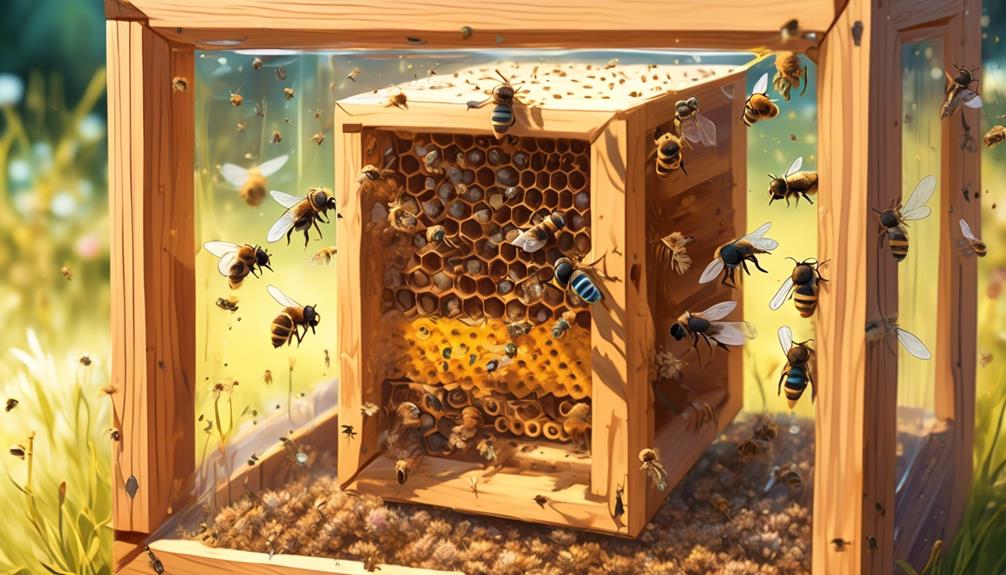
Housing conditions significantly affect Mason bees' productivity, with factors such as container material playing a vital role. When you house these bees in plastic containers, you're likely to see a decline in their productivity levels.
Plastic doesn't absorb moisture as natural materials like wood do. This can lead to damp conditions within the nesting tubes, promoting the growth of harmful molds and pathogens. Consequently, this can severely decrease the survival rate of the larval bees, resulting in fewer adult bees in the following season.
Furthermore, plastic containers may not provide the necessary thermal insulation for the bees. Unlike wood or mud, plastic doesn't offer the proper temperature regulation, potentially leading to overheated or too cool nests. This could adversely affect the bees' reproductive cycle, causing a further drop in their productivity.
Alternative Housing Options for Mason Bees
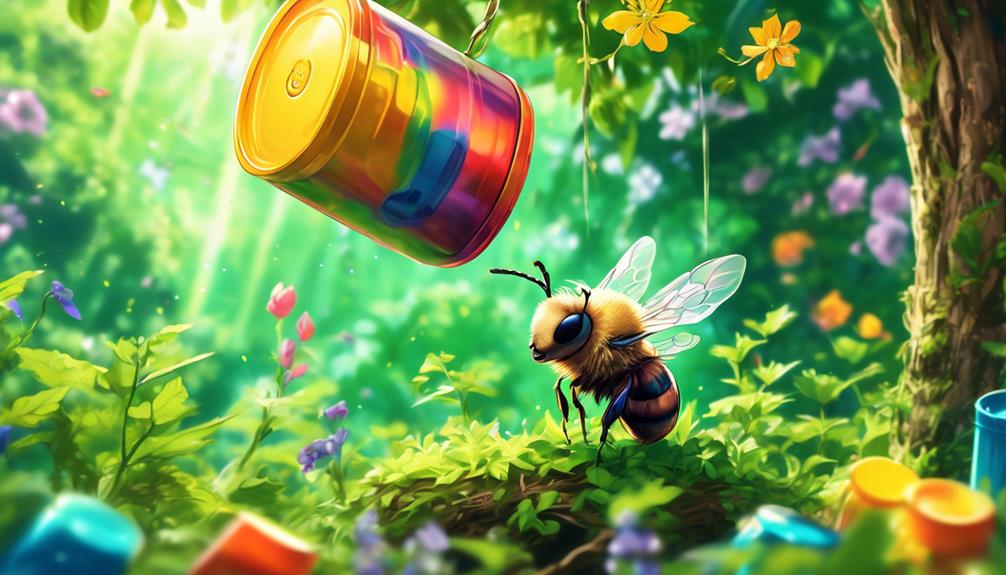
To safeguard the productivity of Mason bees, it's crucial to consider alternatives to plastic containers for their housing. Wood or mud structures offer superior moisture absorption and thermal insulation, mimicking the bees' original habitats and enhancing their productivity and survival rates.
You might also want to explore the use of bamboo tubes or drilled blocks of wood. These options provide the necessary cavities for nesting, while also ensuring good aeration and moisture control. Bamboo is especially beneficial due to its natural resistance to mold and pests. However, remember to source these sustainably to avoid contributing to deforestation.
Another option is bee houses made of untreated, weather-resistant wood. These are usually filled with removable nesting tubes for ease of cleaning and maintenance.
Lastly, consider mud and clay structures. Mason bees use mud to seal their eggs in the nesting cavities, so providing a mud or clay source nearby is beneficial. However, ensure it's free of chemicals and pesticides that could harm the bees.
Conclusion
While mason bees can survive in plastic containers, it's not the best option. Plastic doesn't mimic their natural environment, potentially leading to lower productivity. It also fails to provide proper insulation and can lead to condensation, risking the health of the bees.
For a thriving, productive mason bee population, consider other alternatives. Natural wood, bamboo, or commercial mason bee houses prove to be a more conducive choice for these hardworking pollinators.

